The total guide to mobile app marketing in 2025

How do you get your app to stand out from millions of others? Achieve a top ranking in the app store? Suppress the nagging feeling that your app is a single snowflake in a raging blizzard of technological competition?
The answer to these questions lies in the proven science of mobile app marketing.
App marketing can give you the crucial edge you need to get discovered, drive downloads, and grow a loyal community of users who organically promote your app.
Even though standing out in a crowded market is a challenge, people download 36 new apps each year—so you’ve definitely got a shot.
In this article, we’ll walk you through the ins and outs of mobile app marketing. You’ll learn everything you need to start a mobile app marketing strategy, including the proven strategies to drive downloads, reach the top of the app store rankings, and propel your app to success.
What is mobile app marketing?
Mobile app marketing is the strategic process of promoting and positioning your app to the right audience on the right channels at the right time.
It involves a variety of strategies and tactics to increase app visibility, drive installs, encourage engagement, and ultimately achieve success. It also entails optimizing these techniques over time, tracking performance, and keeping an eye on new trends to ensure the best return on investment.
The mobile app marketing funnel addresses the three main stages of the app use lifecycle:
Why do you need a mobile app marketing strategy?
Currently, there are 5.5 million apps in the Google Play and the Apple App Store combined. Thousands of new apps are submitted each month, and 65% of small businesses and most large corporations have a mobile app.
Yes, competition is fierce. So whether you’re a product marketer, app developer, or small business, you’ll need to stand out to succeed.
Here's the good news: people are always looking for new apps. In fact, average 30-day retention rate for mobile apps is just 2.1%. That's a 97.9% churn rate.
With a good mobile app marketing strategy—it’s definitely possible to cut through the noise and find your audience.

Your app, your data. Drive engagement, conversion, & retention with the most trusted chat API.
The stages of mobile app marketing
Mobile app marketing guides the user through every stage of the marketing funnel, from when they first hear about your app to becoming a loyal user.
But since users often go back and forth between stages, and you’re trying to keep users active for every iteration, the process is also known as the mobile engagement loop.
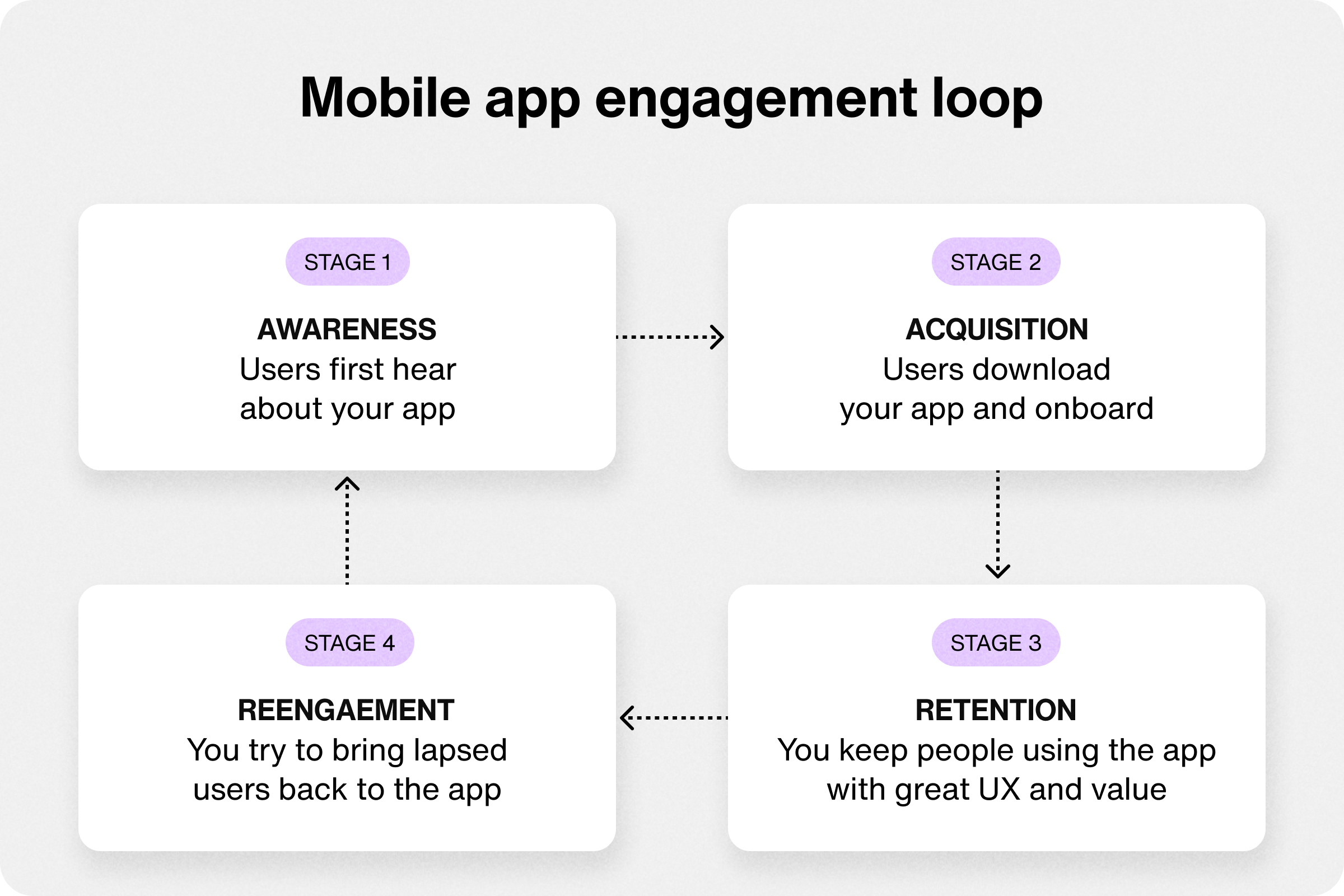
Awareness: How do you make users aware that your mobile app exists?
Acquisition: How do you get people to download and install your app?
Retention: How do you keep users engaged and coming back to your app?
Each stage of app marketing requires a different set of strategies and tactics for engaging users—from identifying your target audience to deciding how to reach them to analyzing their in-app behavior to improve the user experience (UX) and retention.
Ultimately, your goal is to increase your app downloads and gain loyal users. After all, loyal users are the foundation of your product’s success, and promote your app organically by word of mouth.
Let’s walk through each stage of the app marketing funnel and explore the key strategies and techniques of every stage.
1. Awareness stage
The first step of marketing your app is making your audience aware it exists. This is the prelaunch phase, so your focus is on creating visibility and interest for your product.
Here’s the step-by-step process to drive awareness for your app:
Market research
Market research is how you determine who your ideal customer is, and what they want in a mobile app.
Your app should offer a solution to user's problems that other apps in your category don’t. For the sake of standing out, it’s important to offer unique value.
Here’s how to find and understand your ideal customer:
1. Consume their content
Check out the blogs, brands, websites, and social media accounts that your potential customers follow. Try to get a sense of who they are, where they hang out, their challenges and desires.
Good places to find content for market research are:
Quora for topical questions and answers
Reddit for interest-based subreddits
Blogs, podcasts, and YouTube channels for a specific niche or industry
Review sites like TrustPilot
Social media
2. Use market research tools
Market research tools give you a birds-eye view of the app landscape, including macro trends in demand.
Google Trends: See the popularity of search terms related to your app by region or language
Mention: Monitor mentions for app-related keywords and trends across the internet
Survey Monkey: Gather insights about your audience with online surveys
These tools are good for gathering demographic information about your audience—age, location, career, etc.—but may come up short on personal details. For more relevant insights, you can…
3. Talk to people
One of the best ways to get to know your audience is to engage them directly. Also known as primary research, taking a hands-on approach allows you to glean insights you may not find elsewhere.
You can:
Conduct 1:1 interviews and transcribe your conversation using a tool like Otter.ai
Run surveys using a free tool like Typeform or Google Forms
Gather a focus group of 10 people to get feedback on your app (likes, dislikes, improvements)
4. Conduct a competitive analysis
If you don’t know who you’re up against, it's impossible to differentiate yourself. Create a list of your top 5-10 competitors, then make a feature matrix that includes attributes like:
Pricing
App store ranking and reviews
UX strengths and weaknesses
Unique value propositions
Standout attributes (design elements, call-to-action text, promotions, etc.)
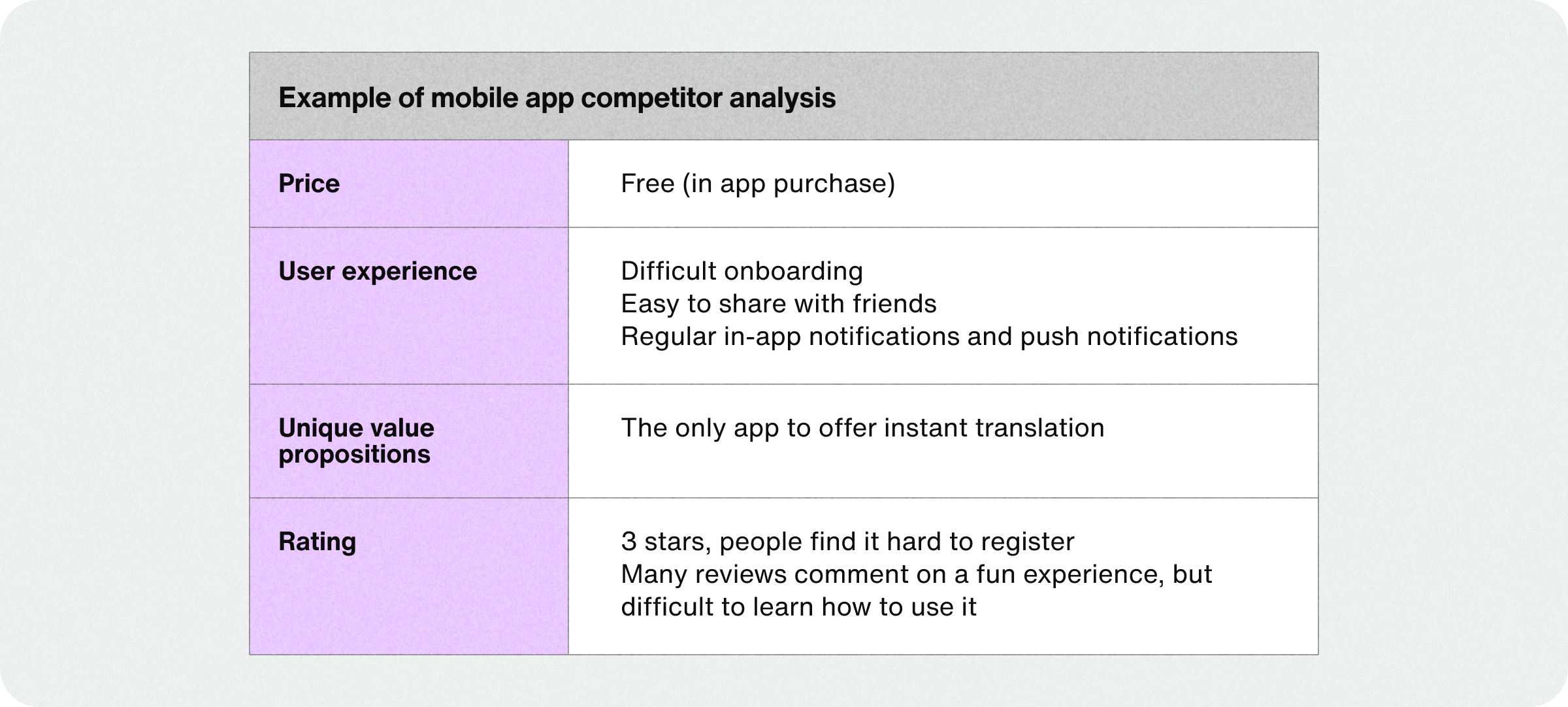
Positioning yourself against the competition—including their flaws and strengths—is essential to a successful mobile app marketing strategy.
Look at what the top players in your category offer and don’t. Carefully consider the features you will offer. Ask yourself how your app will provide unique value to your audience.
5. Build user personas
A user persona is a data-driven profile of your app’s ideal user. It combines all your customer research into an avatar that represents your target user’s demographics, mobile choices, interests, and other key identifiers.
User personas help you get a clear picture of your target audience, understand their needs, and align your app’s features and UX with their wants and expectations. They help you stay focused your audience’s:
Pain points and desires
Preferred brand tone and personality
Favorite design styles
OS of choice
Favorite social and paid ad platforms to engage with
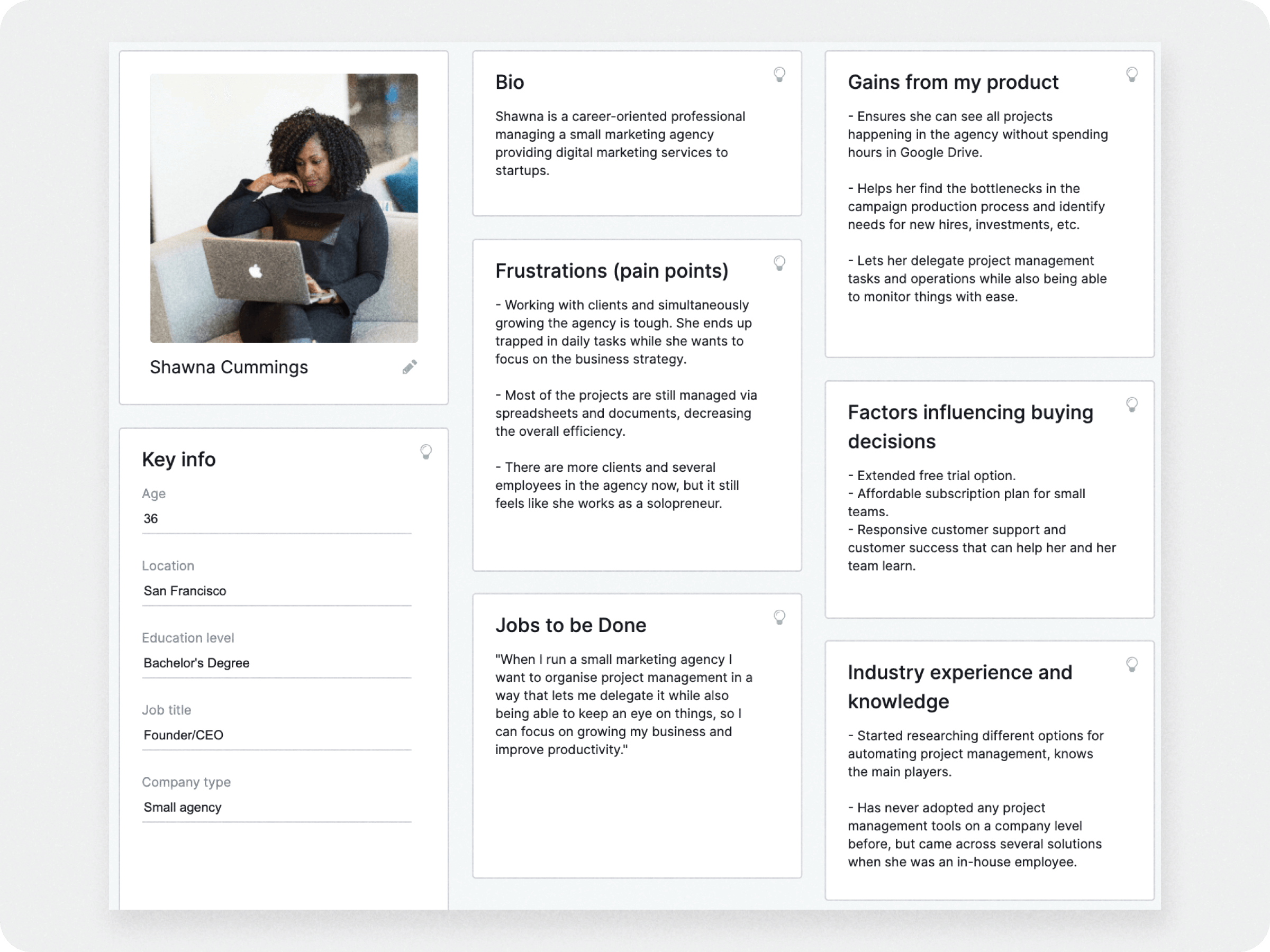
In short, user personas will guide your decision-making during app marketing, helping promote your brand in a way that resonates with your target audience.
Since your audience is likely made up of several types of people, you may need to create multiple personas. As you learn more about your audience, you’ll update personas to reflect this evolving understanding.
6. Messaging and value proposition
Now that you’ve done your research, it’s time to create the messaging for your app marketing strategy. This messaging will appear in your app store listing, website or landing page, and other marketing channels—acting as the hook to get people to download your app.
Your messaging strategy is built around your unique value proposition. This is a short statement that answers the question—"Why should users choose my app over others?"—in terms of the specific benefits, features, or experiences that set your app apart from competitors.
The best messaging is a bold promise. Whether your app is solving a problem, fostering relationships, or creating experiences, be sure to communicate this value clearly and consistently across channels.
Pre-launch marketing
You’ll want to generate buzz for your app before the launch date. This will help your downloads to skyrocket from day one, which is key to achieving the highest app stores ranking. It also helps maximize your return on investment for paid mobile app advertising.
Create a website or landing page
A website is the central hub of your app marketing campaigns both before and after launch. Also known as a “coming soon page,” even a basic landing page will help you to:
Build hype around your app
Highlight your best features and value proposition
Gather email addresses for lead generation
Update potential users about app progress
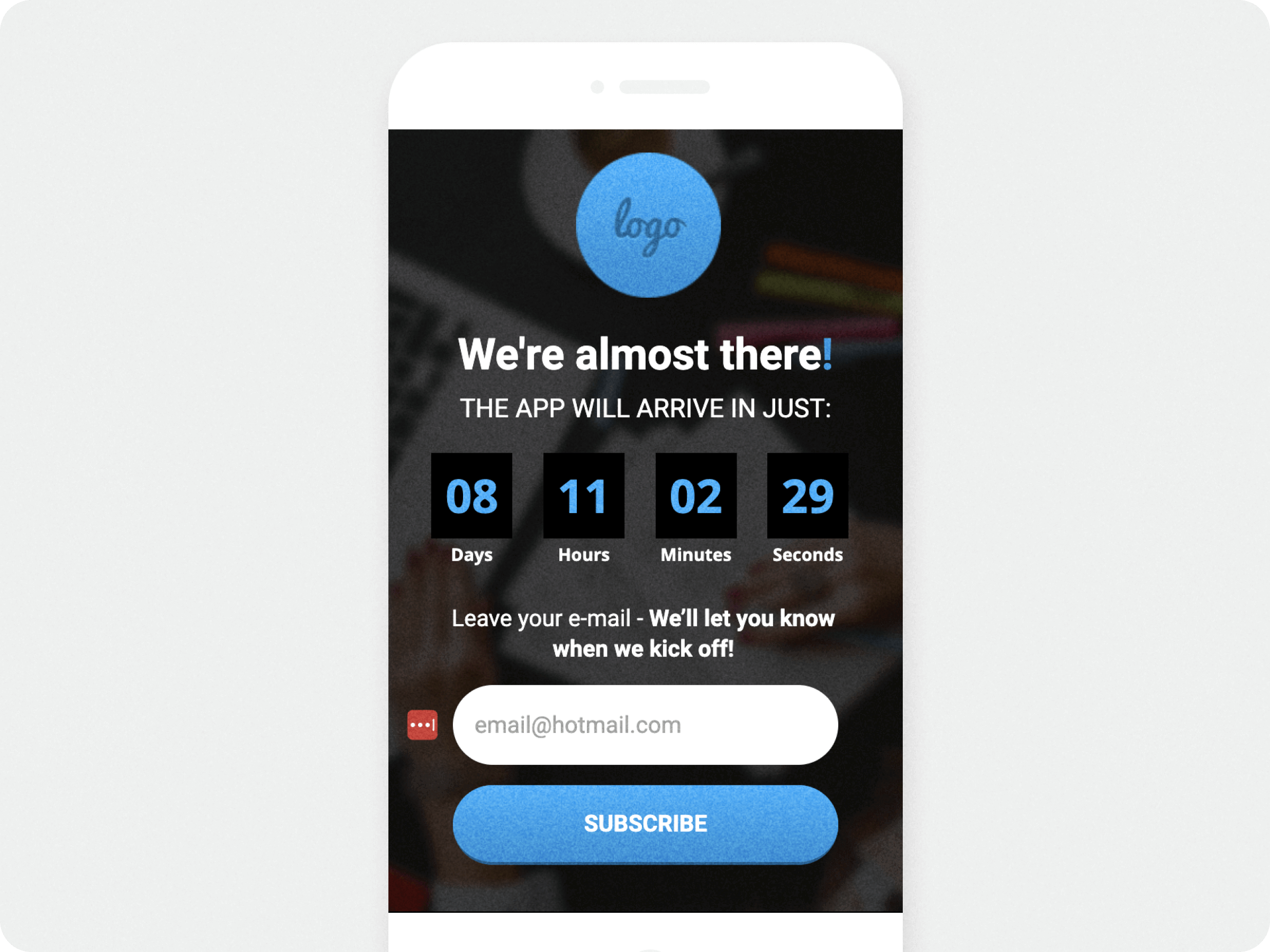
Be sure to provide an appealing and accurate visualization of what users can expect when they install your app. You’ll want to include:
Screenshots and videos of your app
Short punchy copy
A clear call to action (CTA)
Links to your app on the App Store and Google Play Store
Social proof like ratings, reviews, or awards
Create a content marketing strategy
Content marketing helps you attract your target audience by creating and promoting content that’s relevant to their needs. It also helps you increase awareness for your app with search engine optimization (SEO).
For example, a fitness app might publish a blog on their website called “10 ways to stay fit at home.” The blog would highlight the app among other solutions for convenient workouts. This helps you get seen on Google, but can also be shared on social and email to drive awareness.
Your content marketing strategy can include:
Blogs
Social media posts
YouTube videos
Podcasts
Ebooks, white papers, and webinars
Content marketing is a good way to generate awareness, demonstrate value, and gain the trust of potential users. You can discuss your best features, show screenshots and videos, but keep the focus on users and their needs.
After launch, you can share content that’s been created by users, known as user-generated content (UGC). From app store reviews to social media mentions, UGC serves as valuable social proof that can persuade more users to try your product.
Spotify, for instance, has a feature called “Wrapped” that creates a summary of your favorite songs of the year with a share link. When people share their top songs on social, the app gets a lot of free publicity.
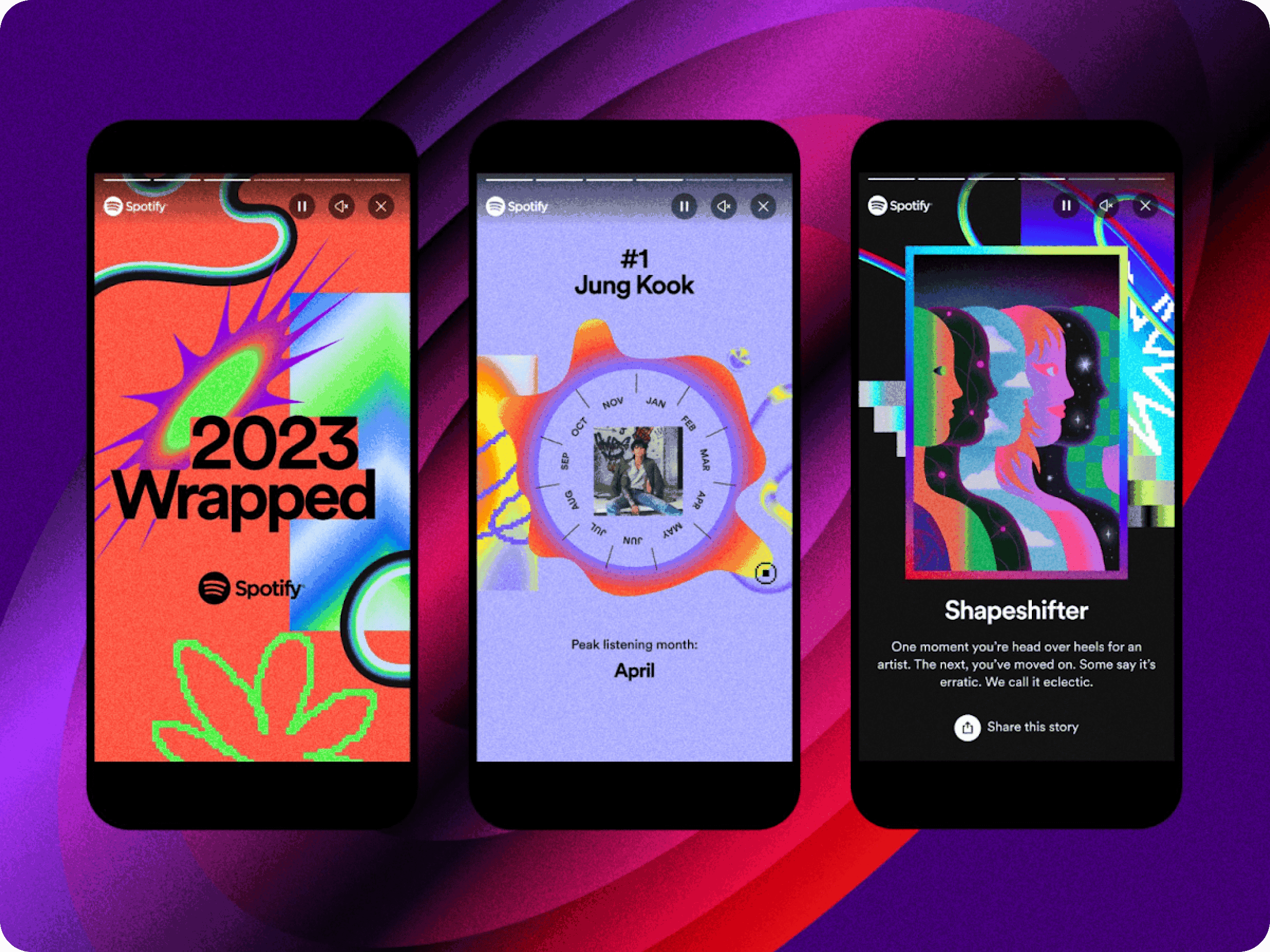
Since you’re the expert on your product, content marketing can be inexpensive. If you don’t want to create the content yourself, you can enlist the help of freelancers on sites like Upwork.
Get seen on social media
The average person spends two and a half hours per day on social media, so it’s a great place to promote your app in a direct yet casual fashion. You can regularly post content, progress updates, announce events, or share funny memes on the platforms where your audience is most active.
The more engaging your content, the more likely it is to get seen and shared. To drive awareness and downloads, your accounts should make it clear you have a mobile app and include a download link in the profile bio.
Influencer marketing
Research shows you can get a 5x return on investment with influencer marketing, while 69% of people say they trust recommendations from influencers.
Reach out to influencers, media outlets, and bloggers in your niche with a short pitch and a link to your website. These partnerships can yield positive reviews and word of mouth that drives awareness and downloads.
It’s important to pick the right influencer. Whether you choose a micro influencer with less than 1,000 followers or a macro influencer with millions—they should be relevant to your target audience. Recommended reading: An introduction to micro influencers.
Press releases
A press release is a notice to the media that explains your app, your story, and who it’s for. A well-crafted press release can help you generate buzz, garner media attention, and attract potential users. Send about two weeks before launch.
You pitch a press release to industry journalists, blogs, and news wire services directly. So if you’re asking a site like Product Hunt to feature you, you’d write a short pitch that summarizes your app’s vision, benefits, and why it's worth writing about.
Pick a launch date
Lastly, picking a release date allows you to plan your app marketing efforts and ensure a smooth, coordinated, and successful launch.
This is the date your app will be available for download, so ensure it's been reviewed by the App Store and Google Play in time. An ideal launch date won’t conflict with any holidays or events that could eclipse your app’s release.
14 proven strategies to boost your app engagement
2. Acquisition stage
After awareness, the next stage is acquisition. The goal here is to get ideal users to download your app.
How will you know if you’re succeeding? Most apps have a conversion rate of 1–2%, so anything above 2% is excellent.
Here are the top techniques for driving app installs:
Paid ads
Paying for ads on search engines and social media platforms allows you to target and reach a precise audience while setting your own budget.
Focus on the social platforms where your audience spends the most time. For instance, millennial users may prefer Facebook and Instagram, while Gen Z users will be more active on TikTok.
With paid search, ads appear at the top of the search results when users search for specific keywords. For example, ads for a streaming service might appear when a user searches for “watch movies.” The link then takes them directly to your app store page.
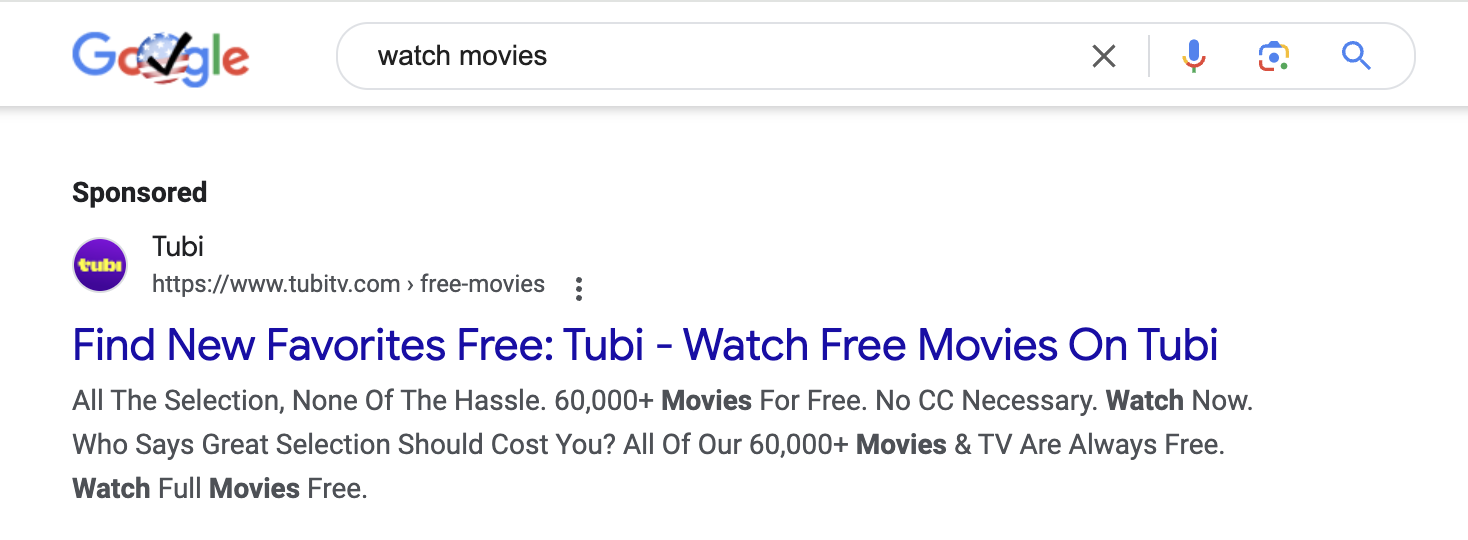
Tip: Write your ads to be concise, punchy, and benefit-driven. You only have a matter of seconds to grab users’ attention and get them to act.
App Store Optimization (ASO)
App store optimization is the search engine optimization (SEO) of mobile app marketing. The text and images in your app store listing, among other factors, influences whether users see your app as they search for apps in your category.
The goal of ASO is to get your app in the top of the app store search results. Since 65% of app downloads are the result of organic search, ASO is crucial to mobile app marketing.
Here’s what you want to focus on:
Discoverability: Using the right targeted keywords will ensure your app ranks higher.
Conversions: The more benefit-driven your app description and visually appealing your icon and screenshots, the higher your conversion rates will be.
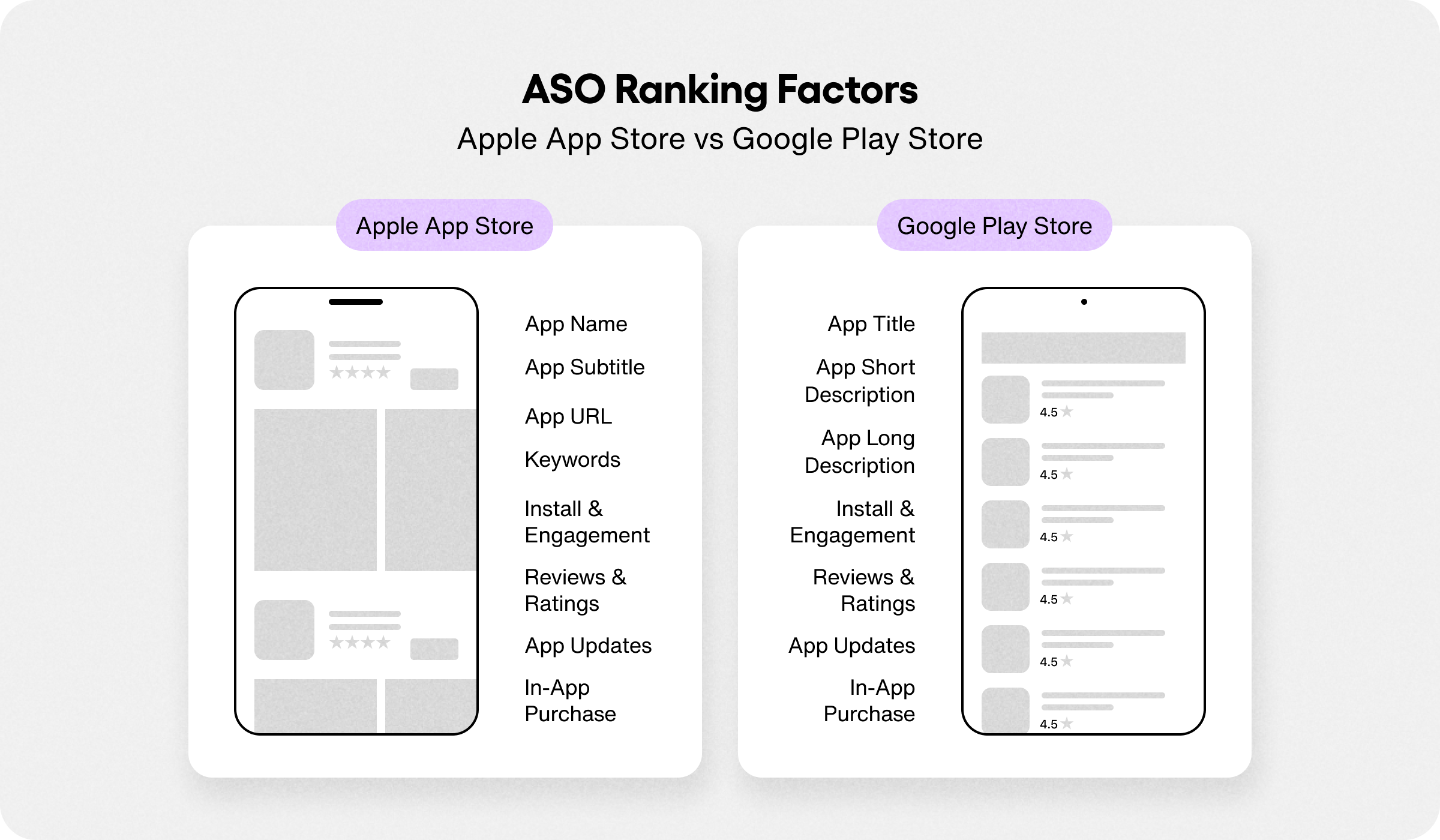
These are the factors that go into a good ASO strategy:
Keywords: Using the proper keywords enables users to find you among the millions of other apps. You can find your keywords using a tool like Semrush, but also look at competitor listings and user reviews for keyword variants. As time goes on, your target keywords may change based on relevance, competitors, and performance.
App store category: Your app’s store category has a big impact on its visibility and competitiveness, so be strategic. Choose the category most relevant to you, but also consider your competitors’ categories. For example, a popular category like “Games” has more traffic but also more competition than a niche category like “Lifestyle.” If your first category is too hard to rank for, you can recategorize later.
App title and icons: The title and icon are the first things people will see when they find your listing. Visuals should be simple, unique, and memorable. Include your primary app keyword in the title.
Screenshots and video: Include screenshots that showcase your app’s best features and unique value. Adding a short video with text captions will also help you grab attention.
Language localization: Translating your app will help it do better internationally, as app store searches prioritize listings in the native language.
Voice search: Many people use virtual assistants like Siri and Alexa to search by voice. Adding conversational keywords lets you also optimize your app store listing for voice search.
Testing and updates: ASO is an ongoing process that rewards constant testing and app improvements so you can boost visibility and increase app downloads.
Leverage existing channels
If you’re a business with a history of customer communications, promoting your app on existing channels such as email, SMS (text messages), WhatsApp, and social media can be very effective.
This allows you to reach a receptive audience on trusted channels, helping to increase the likelihood of a conversion. Depending on your app, you can experiment with promoting your new app through free subscriptions, in-app rewards, or even out-of-app discounts.
Word-of-mouth marketing
Once you start acquiring users, it becomes easier to attract more. This is because happy users are often willing to promote your app to others so long as you make it fast and easy for them.
You can facilitate this word-of-mouth marketing with in-app messaging in various ways, such as:
- Asking for a share on social media right after users' reach a big milestone
- Offering discounts on in-app purchases after they refer a friend successfully
- Prompting your power users for an app store review
14 proven strategies to boost your app engagement
3. Retention stage
Once your app’s installed, it’s time to hold onto your hard-won users. This involves keeping them engaged with the stickiest parts of your app, and eventually turning users into loyal customers.
The retention stage focuses on reducing churn—or the number of users who stop using an app over time—but also re-engaging these lapsed or inactive users. It’s best to run retention campaigns alongside your acquisition campaigns, since the goal is to move users from installation to activation to loyalty without any gaps.
These strategies will help you engage and retain users over the long term:
Push notifications
Push notifications appear on the home screen of a mobile device even if the user isn’t active in the app, making them an effective tool for re-engagement and retention.
The popular game Clash of Clans, for example, sends push notifications about competitions, gameplay changes, and news to encourage habitual use and retention. They can also be used to announce new features, alert users to app issues, or send transactional and mobile app marketing messages.
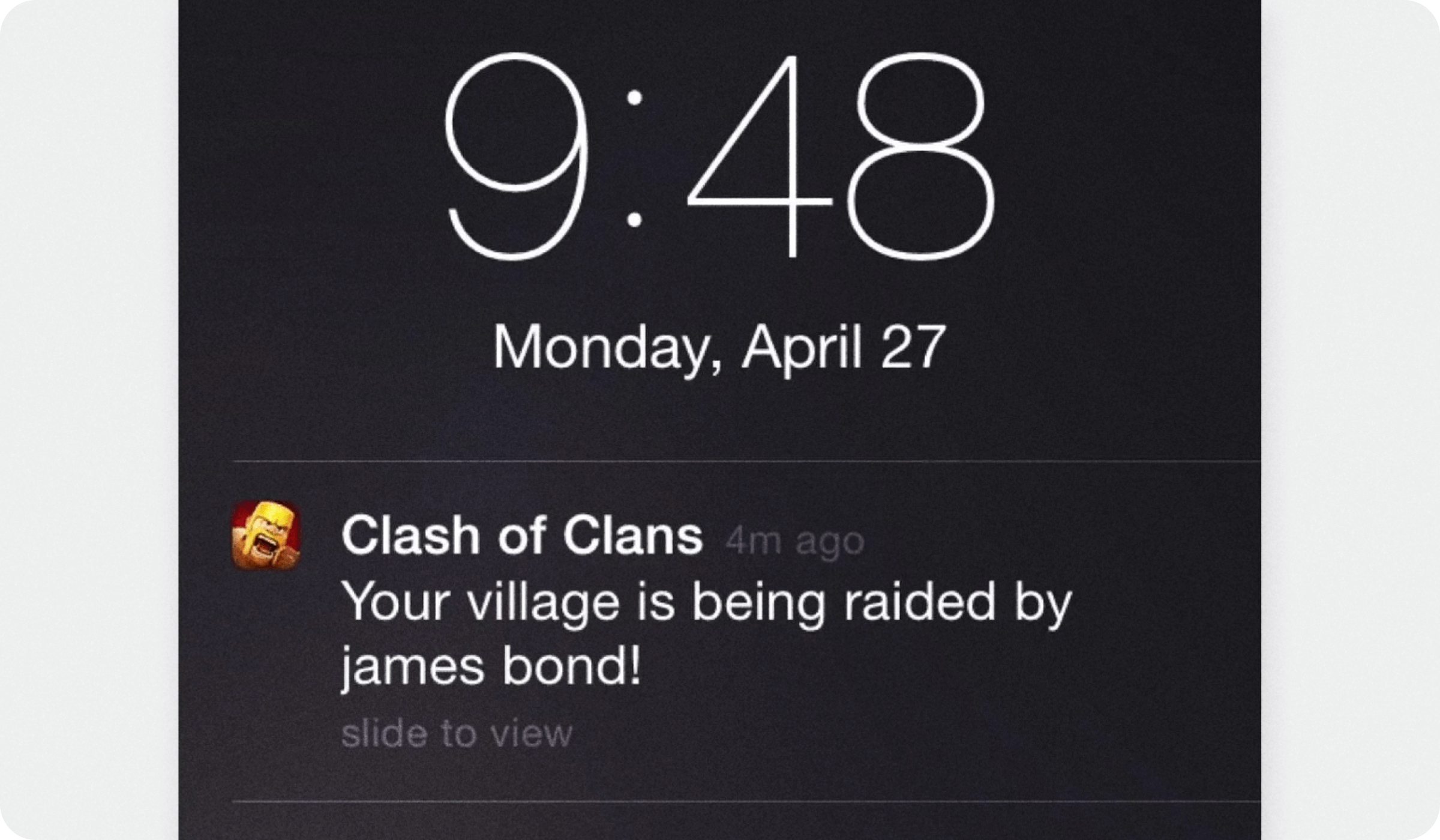
Push notifications have been shown to reduce churn rates by a respectable 6%.
In-app communications
In-app communications allow you to engage users while they’re active in your app, delivering valuable and time-sensitive messages, such as:
Personalized promotions
Feature announcements
Onboarding help
Status alerts
Reminders
For example, you can use in-app messages to highlight your key features to drive engagement and retention. In-app messages have an average open rate of 80%, but are also easy to track and optimize for best results.
In-app messaging platforms, like Sendbird, allow you to easily integrate messaging capabilities into your mobile app and deliver branded, rich notifications to a single in-app notification center.
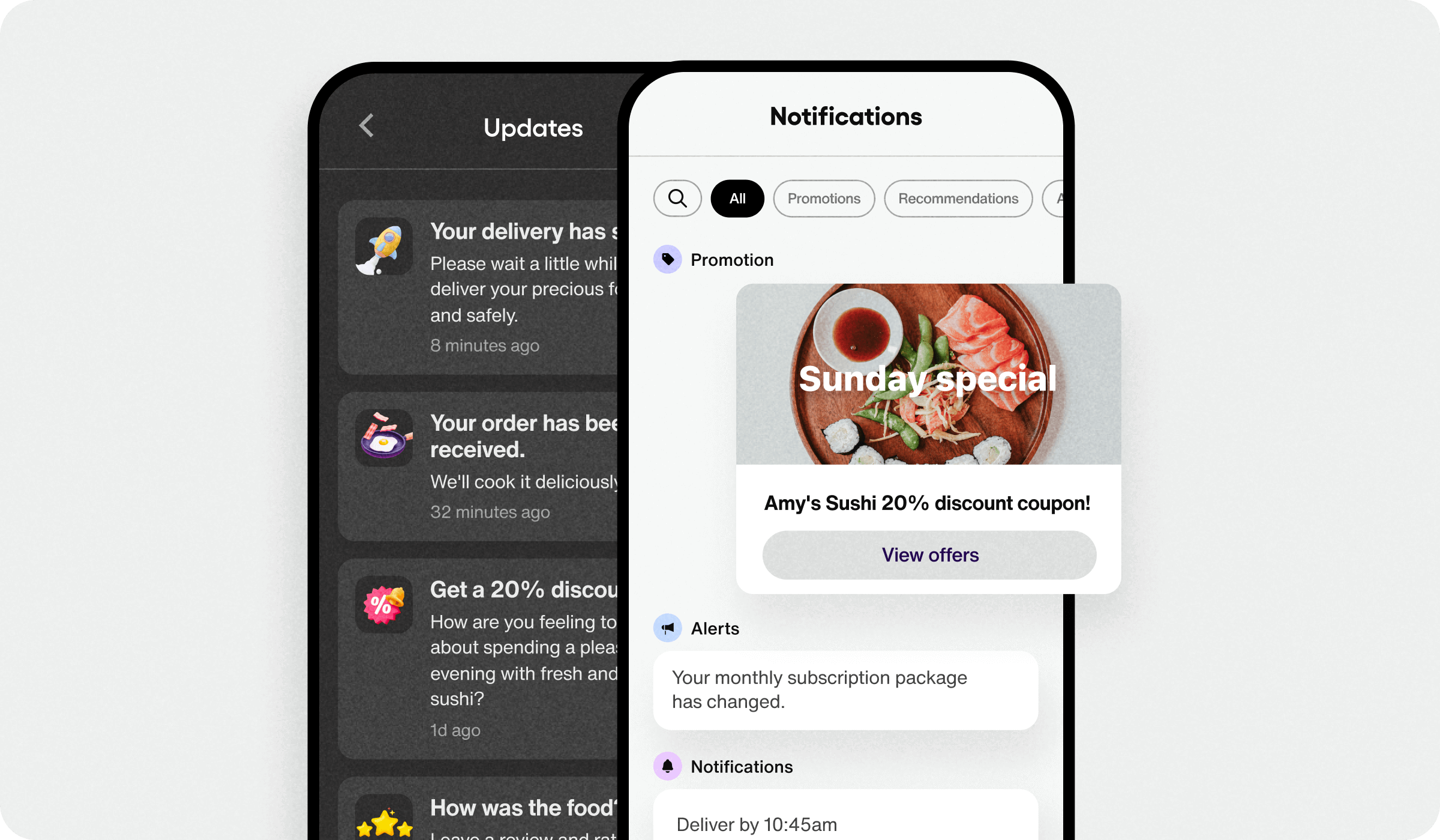
Though in-app notifications have been shown to increase engagement by up to 131%, be judicious with them. Sending too many notifications can overwhelm users and drive them away.
Optimizing user experience (UX)
Your app is only as good as its user experience (UX). Users should breeze through your app without issue, easily moving between key features and experiences. Any friction around functionality or design can spike your churn rate, so always look for ways to optimize UX.
Read more: 20 must-know mobile UX best practices
A/B testing
Personalization
Personalization is a standard feature of leading apps because it makes users feel seen and appreciated. To personalize your app experience, you can address users by name, offer birthday discounts, recommend products based on past behavior, and more.
Email re-engagement
You can rekindle interest in your app by reaching out to inactive app users via email. A great example of content marketing, email campaigns remind users of your app’s value and encourage them to return.
Duolingo, for instance, sends emails and push notifications to get people back into learning if they’ve been gone for a few days. They feature fun facts or progress reminders to entice users back.

Loyalty and referral programs
Loyalty programs help to increase app retention by offering personalized rewards, exclusive offers, and other perks to power users, ultimately encouraging more time in app, repeat purchases, and greater brand loyalty.
Loyal users can become your best advocates through a referral program, which rewards users for sharing your app with friends and family.
In-app chat
If users can talk with friends and feel like part of a community in your app, they're more likely to stick around. In-app chat allows you to add all the features of a rich-media modern messaging app like WhatsApp to your own.
Whether used to offer live support or connect users in a social way, in-app chat is a great way to foster retention and build relationships.
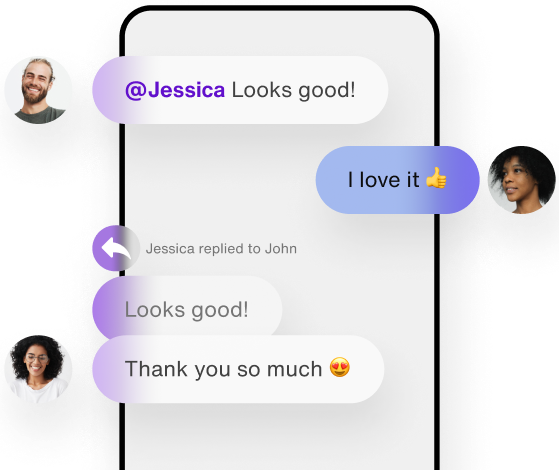
"You may lose 80 per cent of those who download your app, but 80 percent of your business could still come from those 20 percent who remain."
Abbe Waddington, Sales Manager, Leanplum
AI chatbots
You won’t always be around to answer questions from users, but people get frustrated by any waiting. And you probably don’t want to pay someone to do it. This is where a free custom AI chatbot can help.
AI chatbots allow you to respond to user inquiries 24/7, adding a sense of human interaction to onboarding and in-app support that can improve UX and retention.
AI chatbots allow you to:
Provide 24/7 multilingual support
Guide onboarding
Answer FAQs instantly
Solicit customer feedback
Run surveys, promotions, and contests
Offer autonomous scheduling
Read more: What is an AI chatbot?
14 proven strategies to boost your app engagement
Mobile app marketing is about showing value
There’s a lot to mobile app marketing. But from acquisition onward, your app experience is your best tool for gaining and retaining happy customers.
Ultimately, the shortest path to the top of the app store is providing a seamless and valuable experience that’s worth talking.
If you want to improve your mobile UX and app marketing efforts, Sendbird can help.
Our APIs for in-app notifications, push notifications, in-app chat, and AI chatbots make it easy to integrate a modern communications experience into your app. You can craft messages using simple software, track campaigns with analytics, and generally upgrade your app with new and effective marketing channels. You can explore Sendbird’s best capabilities with a free trial.








